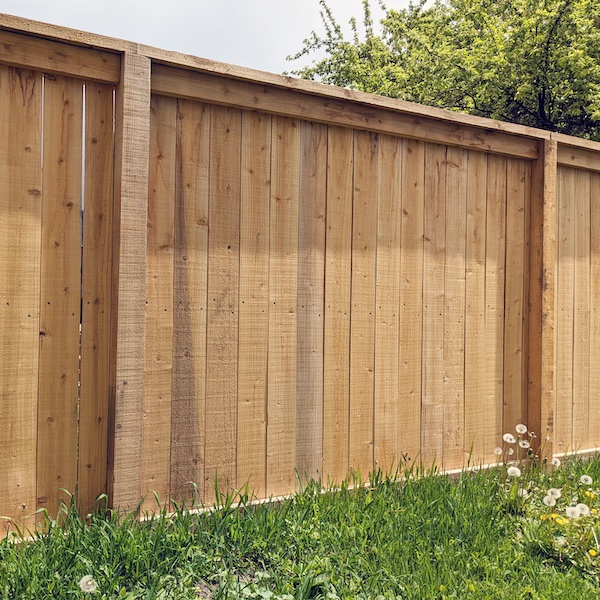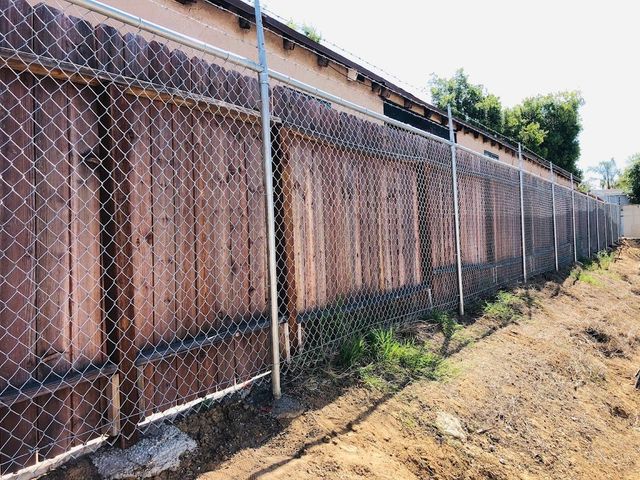All Categories
Featured

Your fencing is a vital part of your property, using security, personal privacy, and visual appeal. There are a number of approaches you can carry out to shield your fence and lengthen its life.
- Select the Right Product. The initial action in protecting your fence from weather-related damage is to pick the right material for your climate. Some materials are extra resistant to the components than others.
Wood Fences: While standard wooden fences provide a natural, attractive appearance, they are specifically prone to water damages, rot, and parasite invasion. If you select timber, select pressure-treated lumber or timber kinds that are extra resistant to dampness, such as cedar or redwood. Vinyl Fences: Vinyl is a low-maintenance option that stands up to fading, splitting, and bending. It's likewise immune to rot and bugs, making it suitable for areas with high moisture or exposure to rain. Metal Fencings: Light weight aluminum and wrought iron fencings are durable and resistant to weathering. Nonetheless, they can corrosion if subjected to moisture for extended periods. Select a galvanized or powder-coated metal fencing to reduce the danger of deterioration. Compound Fences: These are made from a blend of timber fibers and plastic, offering the very best of both worlds-- durability and a natural appearance. Composite fences are immune to dampness, fading, and decomposing, making them terrific for environments with constant rain or snow. 2. Apply Protective Coatings. No matter the material, using a safety coating can aid secure your fence from weather damages.

Wood Fencings: A good-quality discolor or sealer can aid shield your wood fencing from moisture, UV rays, and bugs. These layers create a barrier that protects against water from permeating right into the timber and creating rot. You need to apply a fresh layer of stain or sealer every pair of years, depending on your climate and the degree of direct exposure to rain and sunshine. Plastic Fencings: Although vinyl fencings are normally immune to weathering, they can still suffer from discoloration because of the sunlight's UV rays. You can make use of specific vinyl cleaners or UV protectants to maintain the color and look of your fence. Steel Fencings: For metal fences, think about using a rust-resistant guide and a coat of paint designed for outdoor use. Powder coating is another excellent option for steel fencings, as it develops a long lasting, weather-resistant finish that resists corrosion and rust. 3. Routine Cleaning and Maintenance. Maintaining your fencing frequently is necessary to avoiding damage from the components. Dirt, leaves, and various other particles can accumulate on your fencing, which can cause staining, mold and mildew, and mildew with time.
Wood Fences: Tidy your wood fencing every six months with a light detergent solution or a pressure washing machine (on a reduced setting) to get rid of dust and crud. Keep an eye out for very early indicators of rot, particularly at the base of the fence blog posts where moisture often tends to accumulate. Vinyl Fences: Vinyl fencings are simple to clean with soap and water. Use a blend of vinegar and water to carefully scrub the impacted areas if you discover mold and mildew or mold. Avoid rough chemicals that can damage the surface. Metal Fencings: Routinely tidy metal fencings with a soft cloth or sponge to get rid of rust-causing particles. For wrought iron fences, think about using a rust-inhibiting product to stop rust. 4. Proper Installation and Positioning. Proper installment of your fence can go a long way in shielding it from weather-related damages. Guarantee that your fence is safely secured and that articles are set deep sufficient into the ground to stop shifting throughout heavy winds or tornados. Setting up supporting at essential factors can provide added support. if your fencing is subject to heavy winds.
In addition, take into consideration the positioning of your fencing. Plant shrubs or trees purposefully around your fence to supply some all-natural security from harsh winds, intense sunlight, or motoring rain if possible. Be mindful not to plant too close to the fencing, as roots can harm or shift posts over time.
- Address Storm Damage Swiftly. Storms, especially those with high winds or hail storm, can create instant damage to your fence. After a storm, check your fencing for busted areas, leaning posts, or fallen debris.
- Winterize Your Fence. Cold temperatures and ice can be especially harming to wooden fencings. To prevent this, make certain that the base of your fence articles is elevated and not resting in pooled water.
Conclusion. Weather-related damages is an inescapable part of owning a fence, but with the ideal precautions and normal upkeep, you can significantly prolong the life of your fence. Choose long lasting products matched for your climate, use safety layers, clean consistently, and make sure appropriate setup. With these steps, you can shield your fence from the elements and maintain its appearance and capability for several years ahead.
Latest Posts
Experience The other day's Pub: Where Taste Fulfills Tradition
Published May 14, 25
1 min read
Experience Expert Vision Services in Panama City, FL at the Eye Center South
Published May 14, 25
1 min read
Experience Laser Eye Surgery in Your Area at Eye Center South
Published May 14, 25
1 min read
More
Latest Posts
Experience The other day's Pub: Where Taste Fulfills Tradition
Published May 14, 25
1 min read
Experience Expert Vision Services in Panama City, FL at the Eye Center South
Published May 14, 25
1 min read
Experience Laser Eye Surgery in Your Area at Eye Center South
Published May 14, 25
1 min read